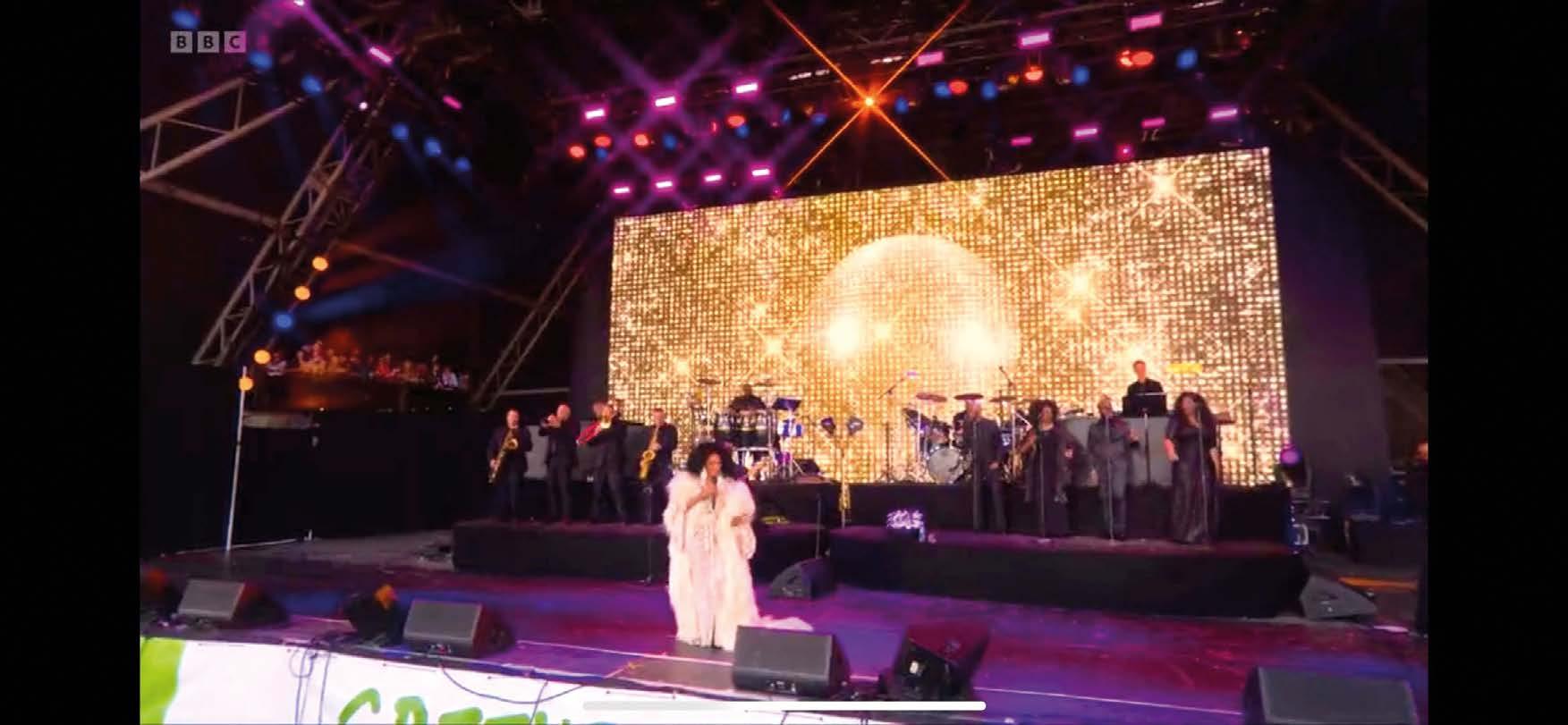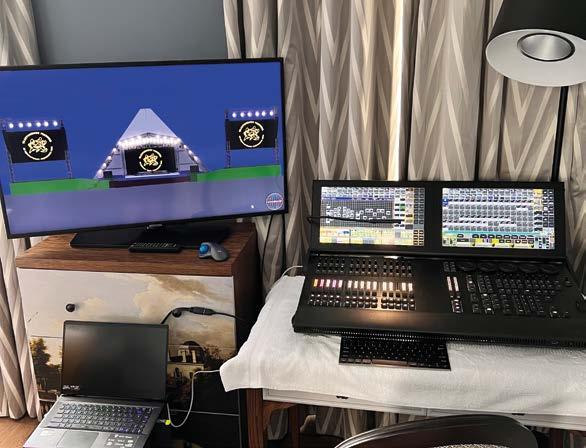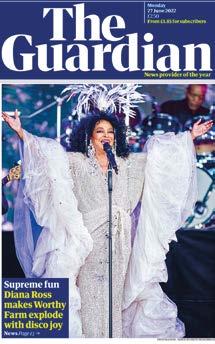
5 minute read
Lighting Review
Diana Ross
and the Road to Glastonbury
Advertisement
| By Bernie Davis
Photographs by David Horner
Lighting a Legend...
Lighting design today crosses boundaries between disciplines more than ever, with theatre productions being streamed live or recorded for broadcast, and live events being televised in front of a paying audience. The skill is to not just try to satisfy both audiences but to deliver high quality to both, even when the needs might appear to conflict. I have watched Glastonbury over the years and it is very clear that some acts are saved for TV by some very skilled vision crew when the lighting designer shows little or no interest in their problems. But this is not always the case, and the results always show. I recently spoke to Ben Rogers and David Horner who regularly work together on live events – Ben is an accomplished Theatre Lighting and Video designer, and David a Lighting Designer and Programmer whose experience ranges from TV to Theatre to Live Events – and they recently brought Diana Ross to the Legends slot at Glastonbury. They were asked to work on her European tour, her first for fifteen years, and had developed a concept for how they wanted it to work. The important values were that she had to be front and centre of the performance, of course, and with the use of big screens the audience would have a good view regardless of the size of the venue. They then made the audience follow the concert through her eyes, so if there was an instrument solo she would look at the instrument and the audience would see a close-up of the instrument too. This meant that the lighting needed to work for those camera shots, and this almost makes their concert lighting a little more like a TV design. The show had to look good on social media, and so it had to look good on peoples’ phones. Such is the modern world!
They wanted to make the audience know that they were part of the performance, and Diana Ross wanted to be able to see them to engage with them, so the design included break-up washes over them and not just blinders, and of course they would appear on the screens too, making them feel more involved. The concert went on tour with seven arena shows and seven festival dates. For festivals they took just the floor package, and for abroad they just flew in and made it work with what they found. To ease the pressure they tag-teamed the dates, swapping show files as the tour progressed as they wanted to keep the look consistent even as it expanded and contracted around the different venues.
Then came Glastonbury. Diana Ross was invited to perform and was of course given the famous Sunday afternoon Legend slot, with all that comes with that: a daylight time slot, with full TV coverage, and a massive live audience. Having said that, with such a large crowd most of the audience would be watching the



big screens, so camera coverage was all-important. Once they knew what equipment was available at Glastonbury they cloned that into their existing show, then David and Ben met up in a hotel for a day of pre-visualisation programming, making their look concepts work with the Glastonbury lighting package. They also contacted the TV camera director Janet FraserCrook, a very experienced director who has worked on Glastonbury for years, and she shared with them her plans on how the camera coverage would work.
They looked at previous
performances that had the daylight slot, and could see that some LDs tried to embrace the daylight more than others. They set about analysing the looks they had used for the set list during the tour and applying those to the larger Glastonbury rig. They knew Janet would take many close-ups from different angles so made sure they all had colour and depth. Along with the high production values they wanted good keying for Diana Ross, and Glastonbury had four front of house towers with new Ayrton moving lights steered by Follow-Me spot control. Follow-Me is a clever process where a camera looks at the stage and remote pan and tilt controls can be linked to as many heads as you wish so they can be manually made to follow an artist. Two further Ayrton units left and right of the stage ensured the full key light control David wanted. Particularly helpful was the continuous pink filter (CTP) that the Ayrton units offered which helped get the colour of the key lights just right. Backlight was in a strong Congo Blue from the Varilite washes throughout, for consistency of look. During the show they had arranged to have a multi-view monitor so they could keep across all shots, and they ran two lighting desks so one could run the show while the other kept up with live updates to balance for cameras.
Some quarters of the press were a touch critical of the sound issues the concert encountered, and social media was its usual unkind self, picking on Ms Ross’s less than perfect performance, but let’s face it she is 78 and the crowd loved it! Kyann-Sian Williams of NME said: From the start until the end of her set, she has the crowd in her hands. In their own fluffed-up curly wigs, you can see audience members relinquish themselves to the musical powerhouse and even cry as they recite back Ross’ lyrics. Being in a crowd with so much love in the air feels euphoric; confirmation that Diana Ross is the ultimate queen. And we all know that was because of the lighting!
| Above:
Lighting for the Diana Ross set
| Right:
Visualisation Suite











